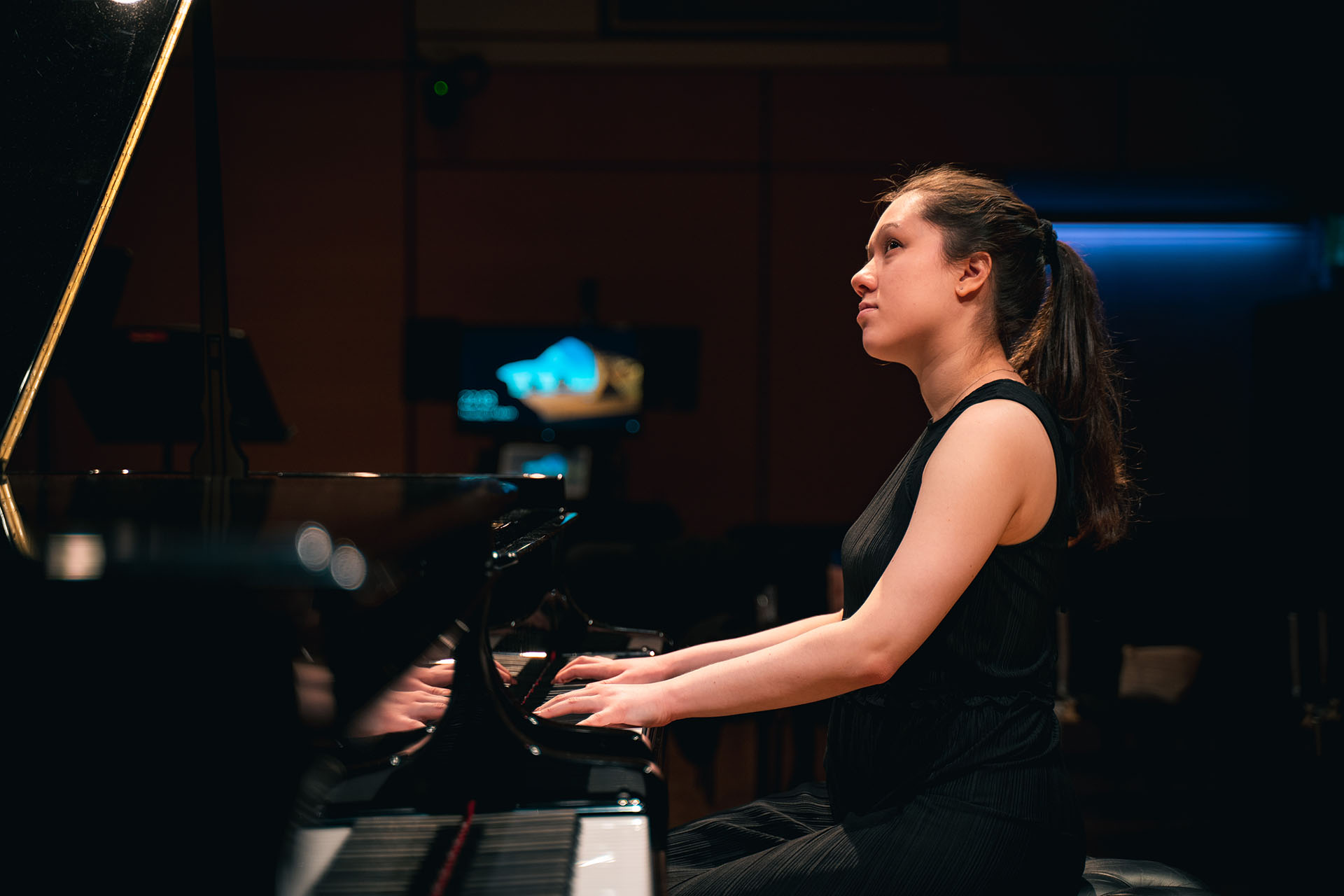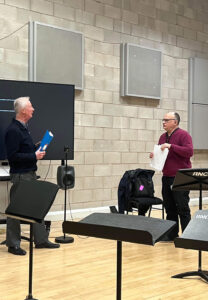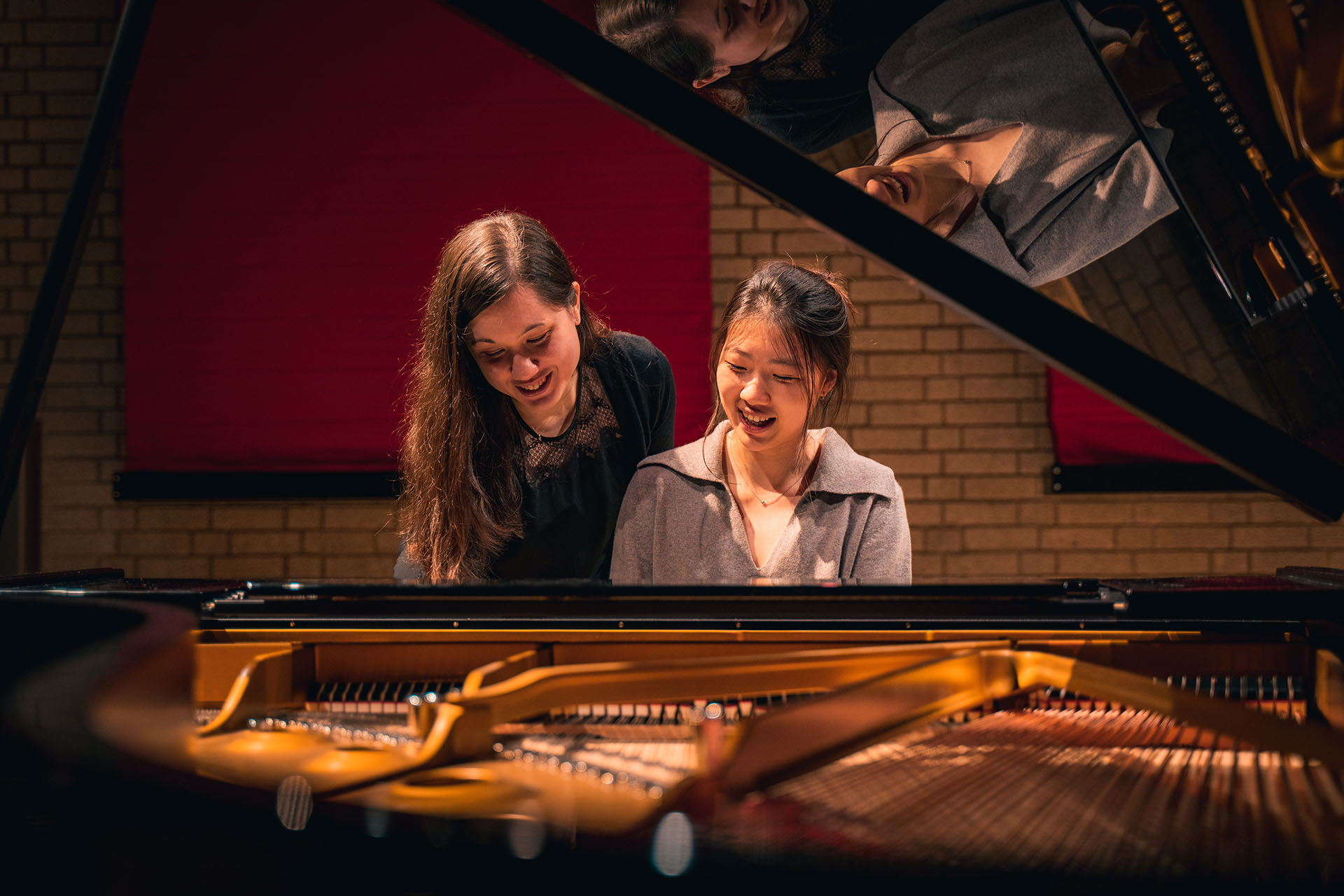Goldberg: Jazz Variations
Digital Ambassador Tiffany Buxton writes about Bach’s famous Goldberg Variations, re-imagined for a special RNCM performance.
In 1741, Bach published a piece called Aria with diverse variations for a harpsichord with two manuals (keyboards). Little did he know that an apocryphal back story (based on a count’s sleepless nights) and a landmark recording by Glenn Gould would make this piece one of the most beloved works in Western classical music. Known today almost exclusively as the Goldberg Variations, it is the capstone of Bach’s four-part Clavier-Übung (Keyboard Practice), in which Bach wanted to show the keyboard’s full possibilities in terms of technical development, virtuosic finesse and compositional sophistication.

Virtuosity and technique aside, perhaps what is most remarkable about these variations is their individual ingenuity and their combined unity. The music is constructed symmetrically and begins with a beautifully tranquil and highly ornamented Aria, the bass line of which underpins the 30 variations that follow. Within the labyrinth organisation of the work, we can see Bach’s fascination with numbers: the 32 movements are built on a 32-note bass-line; each of them is in binary form; and all phrases throughout are of two, four, or eight bars length. It is a monumental work that continues to capture the imaginations of musicians and listeners alike, and as my friends and I from the School of Keyboard Studies attend rehearsals in preparation for a departmental performance of the Goldbergs, I wonder what Bach would have made of Simon Parkin’s jazz-inspired repeats, written nearly three centuries later.
 Simon acknowledges that it may be hubristic to place his own work alongside Bach’s, but Bach’s music is completely indestructible, and he hopes that his re-imaginings might show this wonderful music in a new light. As he explains, it has always been difficult for the performer to know what to do with the repeats when playing the Goldbergs: the usual solution of adding a few token ornaments had never convinced him, and the original is so elaborate and complex that there’s often not much room for them anyway. Whilst many pianists simply omit the repeats, Baroque musicians all improvised, and it struck him that jazz playing is the current, and equivalent, improvisatory performance style. He therefore decided to use various jazz-derived idioms for his repeats, including swing, funk and even Reggae (the image of Bach’s wig replaced by dreadlocks has haunted him for a while!).
Simon acknowledges that it may be hubristic to place his own work alongside Bach’s, but Bach’s music is completely indestructible, and he hopes that his re-imaginings might show this wonderful music in a new light. As he explains, it has always been difficult for the performer to know what to do with the repeats when playing the Goldbergs: the usual solution of adding a few token ornaments had never convinced him, and the original is so elaborate and complex that there’s often not much room for them anyway. Whilst many pianists simply omit the repeats, Baroque musicians all improvised, and it struck him that jazz playing is the current, and equivalent, improvisatory performance style. He therefore decided to use various jazz-derived idioms for his repeats, including swing, funk and even Reggae (the image of Bach’s wig replaced by dreadlocks has haunted him for a while!).
In 2020, Faber published Simon’s Goldberg Variations to be played as the repetitions in performances of Bach’s work, and RNCM pianists from across the School of Keyboard Studies were given the opportunity to record one or two variations for the Faber website. We began learning our chosen variation(s) (alongside Bach’s originals) during the lockdown, but it soon became clear that they were by no means easy to play. The Goldberg Variations are among the most technically demanding works in the keyboard repertoire, and Simon’s jazz repeats took things up another notch.

Over the last few weeks, we have been playing our variations to each other in rehearsals, comparing notes and discussing issues relating to style and tempo. It is fortunate that Simon has been with us in several guises as composer, pianist and mentor, because I have been assigned two very challenging variations: No 10, a fughetta with 4-part counterpoint, and No 11, a virtuosic toccata written to exploit the cross-hand gymnastics possible on dual keyboards (and one of the riskier variations for pianists as a result!). The canon which completes this trio of variations, No 12, will be performed by Graham Scott, and many of us are looking forward to his rendition of Parkin’s groovy Reggae-inspired repeat at the upcoming concert.
It is unlikely that Bach, his sons, or Goldberg played the set of variations straight through at a single performance, and as pianists we are thrilled to have been given the opportunity to perform the entire Goldberg Variations with Simon Parkin’s jazz repeats. Join us at 8pm tonight in the Concert Hall as we re-imagine one of the most profound pieces of music ever written. Alongside Simon, the performers are Misha Tyshkul, Yulim Jung, Angelina Pavlou, myself, Graham Scott, Nye Hughes-Watts, Nalni Chen, Yong Ong, Fangwei Zhao, Cameron Dickason, Rose McLachlan, Minsung Park, Harry Lai, Amy Wakefield and Murray McLachlan. It’s a great line-up of pianists, and the night promises to be a stylistic mashup of marathon proportions.
Tiffany Buxton
BMus, Piano
22 March 2022

